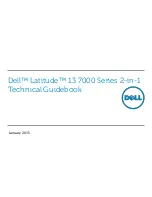
Code & Modules, Inc.
PixieBoard User Guide
Rev 1.1
13
Micro SD Card Port (with a bus of up to 104 MB/s)
USB can host common storage devices.
SATA-II
1
(up to 3 Gb/s) can be used to connect a Hard Disk Drive. It is available via the
expansion port connector
1.3.5.
Video
Pixieboard provides encoding and decoding functions for many common formats, including h.264
and numerous MPEG / JPEG derivatives.
1.3.6.
Audio
2
Digital audio is available via the mini TOSLINK® optical port.
Analog audio is available through the 3.5 mm line out.
1.3.7.
USB
Pixieboard provides the following hardware for USB connections with current demand of up to
500 mA:
2 Type-A Host USB 2.0
1 microUSB OTG 2.0
1 USB 2.0 HS is available via the expansion port connector.
1.3.8.
I/O
I2C – Two ports are available via the expansion port connector.
GPIO – Available via the expansion port, unused interface pins can be reconfigured to be
GPIO.
UART – Two ports are available via the expansion port connector.
SDIO – One serial data interface is available via the expansion port connector.
CSI – One Camera Serial Interface is available via the expansion port connector.
DSI – One Display Serial Interface is available via the expansion port connector.
SPI – One port is available via the expansion port connector.
1.3.9.
Wired
Networking
CAN – One port is available via the expansion port connector.
GbE – One Gigabit Ethernet interface is exposed in the expansion port connector.
1.3.10.
Wireless
Networking
1.3.10.1.
WiFi
Pixieboard offers 802.11 a/b/g/n/ac @ 2.4 GHz, 5 GHz, 2x2 MIMO.
Available Hardware:
WiFi module is embedded within Pixieboard and connected over PCIe. The PCIe interface
complies with PCIe specification Gen2 x1 lane and supports the PCI Express 1.1/2.0
standard.
1
SATA-II is only available for Pixieboard Pro and Pixieboard Pro+.
2
Available only for Pixieboard Pro and Pixieboard Pro+.

























